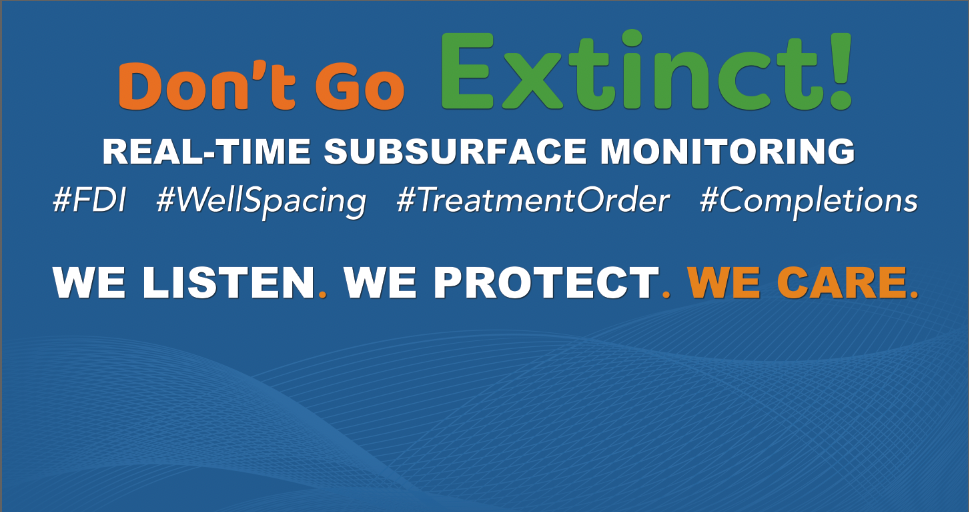
- This event has passed.
URTEC
June 17 @ 8:00 am – June 19 @ 5:00 pm
Booth #632

Technical Program
| MicroSeismic Voice at URTEC | |||||||||||
|---|---|---|---|---|---|---|---|---|---|---|---|
| Monday, June 17 – Wednesday, June 19 | Houston, TX Booth 632 | |||||||||||
| Topic | Presenter | Abstract | |||||||||
| Monday, June 17 10:00 AM – 6:00 PM Refreshment Breaks: 10:00- 11:00 AM 2:30-3:30 PM | 10:00 AM | “Real-Time Data for Real-Time Decisions” Part 1 Frac Driven Interactions | Jon McKenna, Ph.D MicroSeismic, Inc. Geological Engineer | Yes | |||||||
| 10:30 AM | “Is There Life After Frac’ing” | Peter Duncan, Ph.D MicroSeismic, Inc. Founder & CEO | Yes | ||||||||
| 11:00 AM | Interview with AAPG | Peter Duncan, Ph.D MicroSeismic, Inc. Founder & CEO | |||||||||
| 2:30 PM | Pioneering Progress: MicroSeismic’s 10-Year Technical Evolution | Michael Thornton, Ph.D , CTO Keaton Cheffer, Software Engineer MicroSeismic, Inc. | NO | ||||||||
| 3:00 PM | “Real-Time Data for Real-Time Decisions” Part 2 New Areas (Step-Outs) | Dr. Jon McKenna MicroSeismic, Inc. Geological Engineer | Yes | ||||||||
| 4:40-6:00 PM | Opening Icebreaker Reception | Exhibit Floor | |||||||||
| Topic | Presenter | Abstract | |||||||||
| Tuesday, June 18 8:30 AM – 6:00 PM Refreshment Breaks: 10:00- 11:00 AM 2:50-3:30 PM | 10:00 AM | “Time-dependent Stress Shadow Model Explains Tracer Observations in Denver-Julesburg Basin” | Dr. Jon McKenna MicroSeismic, Inc. Geological Engineer | Yes | |||||||
| 10:30 AM | Pioneering Progress: MicroSeismic’s 10-Year Technical Evolution | Michael Thornton, Ph.D , CTO Keaton Cheffer, Software Engineer MicroSeismic, Inc. | No | ||||||||
| 3:00 PM | “Real-Time Data for Real-Time Decisions” Part 3 Refracs | Dr. Jon McKenna MicroSeismic, Inc. Geological Engineer | Yes | ||||||||
| 4:40-6:00 PM | Exhibit Reception | Exhibit Floor | |||||||||
| Abstract | |||||||||||
| BOOTH TALK ABSTRACTS | |||||||||||
| “Real-Time Data for Real-Time Decisions” JON MCKENNA, Ph.D. – Completions Engineer, MicroSeismic, Inc. | |||||||||||
| Current Completion Techniques Require Sophisticated Real-Time Data to Solve Today’s Oil and Gas Challenges. Whether you are hydraulically stimulating wells in a new area, improving reservoir contact around previously depleted wells, testing completion techniques, or recharging outdated wells that need to be refractured, real-time passive surface monitoring can help track your injected fluid and proppant and resolve in-situ stress orientations and magnitudes as they evolve dynamically. • Provide case studies of how microseismic data can be used as a real-time tool to test stimulation designs in new areas, • Discuss frac-driven interactions and their impact on offset wells and • Explore refracs and how they can adequately stimulate entire wellbores to maximize production and profitability. | |||||||||||
| “Time-dependent Stress Shadow Model Explains Tracer Observations in Denver-Julesburg Basin” JON MCKENNA, Ph.D. – Completions Engineer, MicroSeismic, Inc. Hydraulic fracturing causes local stress shadows that influence fluid propagation on future stimulated stages and wells. Stress dissipates over time and returns to the virgin stress state. Analysis of injected well-specific tracer chemicals during production on 7 horizontal wells treated over a 25-day period in the Denver-Julesburg basin demonstrates that stress-shadows dissipate after ~12 days. Results suggest that fluid from offset wells treated <12 days from the parent well treatment will be contained close to the treatment well. After 12 days, stress shadows have dissipated, and tracer is produced up to 2000 ft laterally from the injection well. | |||||||||||
| “Is There Life After Frac’ing” PETER DUNCAN, Ph.D. – Founder & CEO | |||||||||||
| Today, the inherent value of microseismic monitoring is once again causing growth in its application, but not solely for monitoring fracs to make better wells. Microseismic monitoring is finding new applications in such diverse fields as; • Induced seismicity monitoring (including wellbore constriction and shearing) • Frac-driven interaction (FDI) mitigation • Civil engineering (particularly sinkhole collapse and water resource protection) • Carbon sequestration (CCS) • Enhanced geothermal system operation (EGS) In this talk, we will present the evolution of the technology and how it is transitioning into these diverse applications. | |||||||||||

